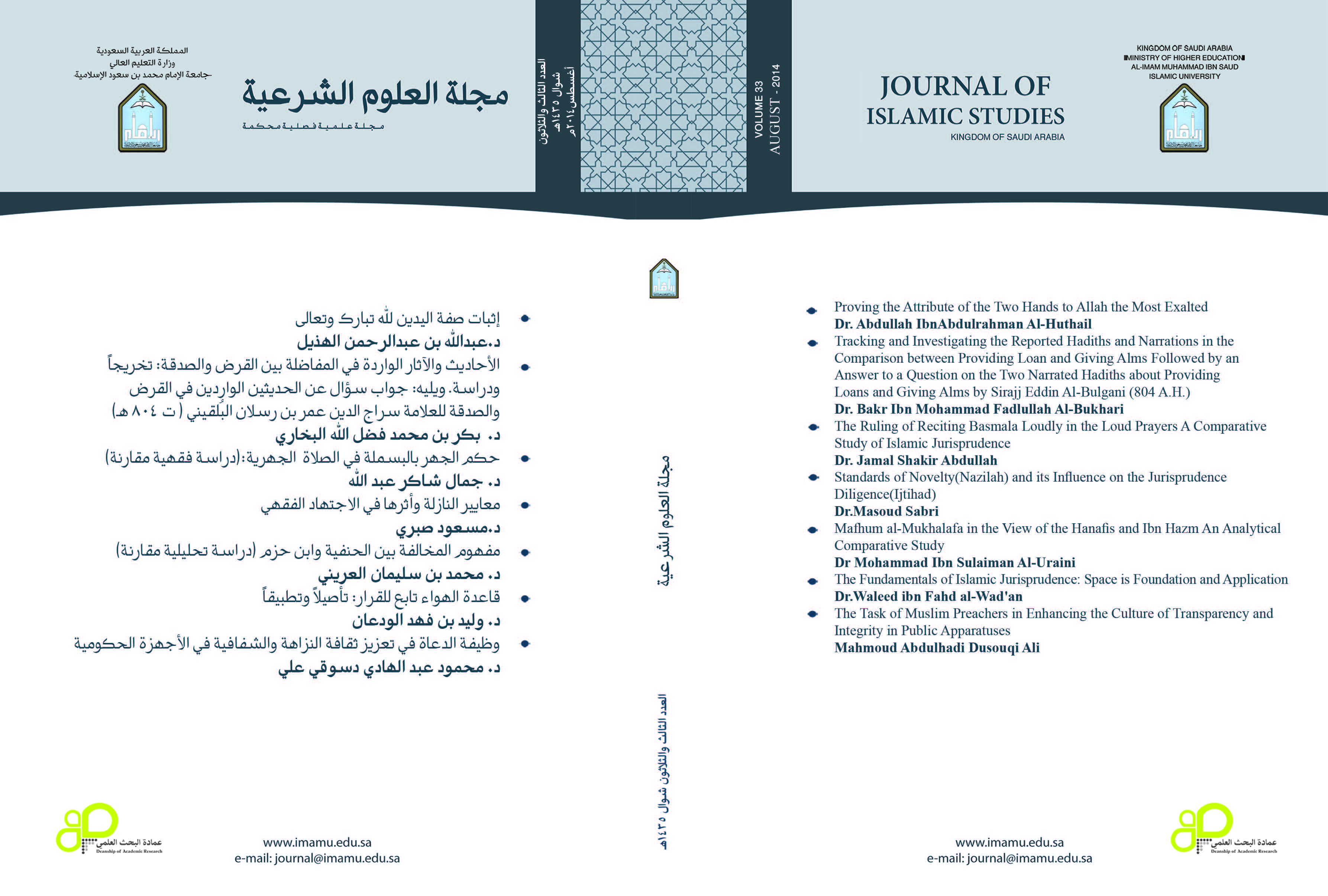The Fundamentals of Islamic Jurisprudence: Space is Foundation and Application
Abstract
The science of the fundamentals of Islamic jurisprudence is of such importance that no Muslim scholar or jurist can do without it; the high status of a Muslim jurist, his degree of knowledge, and the rulings he comes up with in legal issues depend on the knowledge of, and experience with, the fundamentals of Islamic jurisprudence. One of the fundamentals that has gained importance in the books of jurisprudence states, “the Space of any property is attached to its ground in regard to the rulings it has.” This fundamental is well known in the books of Islamic jurisprudence scholars, and is widely discussed by students and scholars alike. However, it has not gained enough interest in research and investigation, and has been hardly referred to in the jurisprudence rules, and no scholar has investigated it in detail, to the best of my knowledge and understanding. Accordingly, this study is concerned with collecting what was scattered among scholars' views, with respect to this fundamental, its rule, its evidence, its importance, and its relations with other fundamentals of Islamic jurisprudence. The study also aims at exploring what might control the rulings based on such fundamentals, and also, carrying out appropriate the jurisprudence applications therein. The study has concluded that the fundamental mentioned above is one of the many fundamentals of Islamic jurisprudence that were inferred from authentic religious texts. Muslim scholars agree that it can be governed by many determinants approved by scholars, including, the name of the property should not change, the unity of property, the investigation of the reason of ruling, absence of damage resulting from it, the need for it, the non-existence of a statement contradicting it, and direct attachment. The study shows the variation of the applications of the fundamental, and its being involved in most jurisprudence sections. It also explains the relation between this and the other two fundamentals, namely the fundamental of what is adjacent to the property, and that of which is situated below the property. Additionally, the study addresses some of its subsequent determinants.




